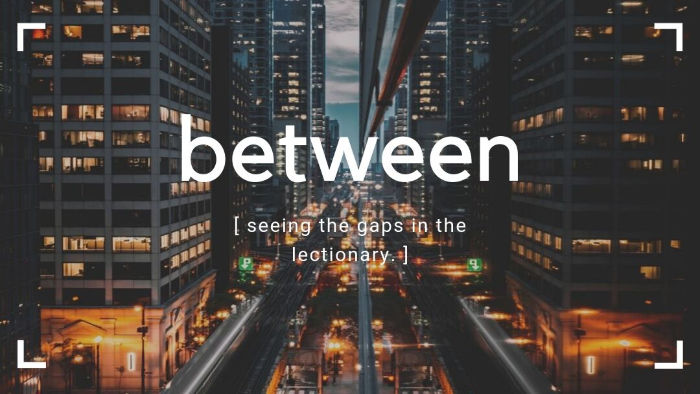
A look at the gaps in the lectionary.
This week: the gap between Christmas 1B and Epiphany 1B
The text: from John to Mark 1:1-3
We really did just do this. In the second week of Advent we had the same same stuff. Then, we had verses 1-8 and here we have verses 4-11.
Then, in the third week, we jumped to John and heard the same stuff in his voice.
Of course, the one thing missing from those readings was the baptism itself, which we get to hear now.
Our focus today, however, is what happens between readings. And there is a little bit to remember.
1. All of John
Our last Sunday reading was John 1:1-18. Which might sound a bit like an introduction for John the Baptizer this week. But it is mostly heard as the co-existent equality of God and Jesus from the beginning and the miraculous in-breaking that comes in the incarnation.
2. Holy Name
On January 1st (or 2nd), the church celebrates the Feast of the Name of Jesus. The character and timing of the feast has changed, but it has the twin character of honoring the naming of Jesus and the name of Jesus.
For this feast, we read Luke 2:15-21.
3. Christmas 2B (when it occurs)
In those rare occasions when we get two Sundays between Christmas and Epiphany, we get a second set of readings. Among them is a choice between three gospel choices:
- Matthew 2:13-15,19-23 (flight into and return from Egypt)
- Luke 2:41-52 (the boy Jesus in the Temple)
- Matthew 2:1-12 (the visit of the Wise Men)
Note: These readings are different for the Catholic lectionary.
4. The Epiphany
Quirks and frustrations with the calendar and what readings should be done when notwithstanding, most of us will have done The Epiphany before Sunday.
The Epiphany reading in the West is the visitation of the Wise Men in Matthew. Which, for the most liturgical among us, now reads like a tragedy after Holy Innocents on December 28th.
5. Mark 1:1-3
The introduction to the gospel that we read back in Advent 2.
Preparing for the Beginning
The fascinating part about all of this story between Christmas Eve services and the next Sunday most people come back to is how much of it really does inform the arc of the wider story.
And yet none of it is entirely necessary to understand the workings of the story. At least, not directly.
But these readings, particularly for the three holy days after Christmas,
Offer us a reminder of the world Jesus came into. What the Incarnation came to change.
And this awareness helps us understand why it is so significant that Jesus would receive baptism, that his ministry would begin here.
And bringing with this, the awareness that the early church put far more emphasis on this than on the birth itself. That this is the beginning.
Therefore, the work that we did in the Advent season, to prepare for the beginning, is coming to fruition.
This is rarely treated as a day half as exciting as Christmas. But it should be. It can be.
